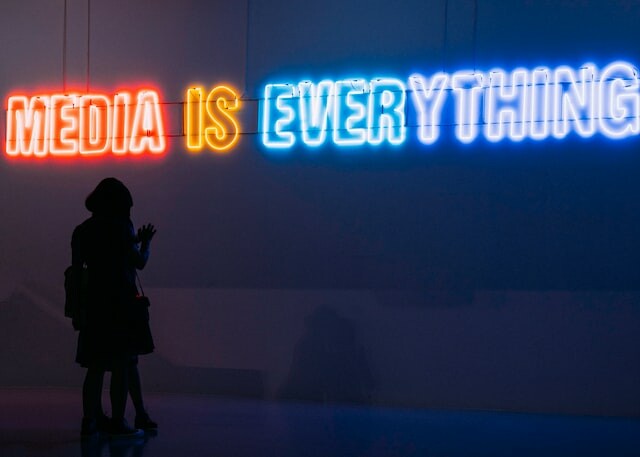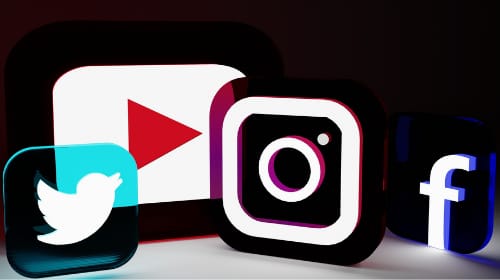Working with many brands from different industries, I often get asked if brands should focus on their organic social or paid social media strategy. It’s important to step back and understand that it’s not ‘organic social VS paid social.’ The reality is that it’s ‘organic social AND paid social.’ Both elements play an important role in your social media marketing strategy and work together to bring businesses’ goals to life.
I will be taking you on a journey below on ways to boost your digital marketing strategy. Whether you are an influencer, marketer, social media marketing agency employee, or business owner, the organic and paid social media strategy information I’m about to share with you will help you on your digital marketing journey.
Relevant: Outsmart S2E08: Impact of Social Media
What is Organic Social Media?
Organic social media is when users or brands create and promote organic, free posts on their social media channels. When a social media user organically posts on their social media platform, their current follower base, also known as their social network, will be able to see the post. Non-followers can discover their channel through location tags, hashtags, and mutual followers. An organic social media strategy is an effort to boost social media activity without utilizing a paid promotion.
What is Paid Social Media?
Paid social media is when users or brands pay for promotional content across social media channels to reach a target audience. This includes advertising and sponsored promotions, such as branded or influencer-generated content, or display ads across social media channels like Facebook, LinkedIn, Twitter, Instagram, TikTok, Snapchat, and more.
Social media platforms usually use one of the two measures below to price the content:
What are the Benefits of Organic Social Media?
The benefit of organic social is that it is FREE. Brands and users can effectively manage their brand reputation through organic marketing and community management, including responding to comments, resharing social posts and more. If a customer is showing that they are facing issues with products via comments or messages, a brand can respond directly to address the issue with a solution online. This action will help with establishing trust and demonstrating transparency within their target audience.
Social media managers can also receive free content from customers. User Generated Content (aka UGC) can also be free. An example of this is when a customer purchases a product and produces photos or videos using the products and creates social posts. In this case, brands can share these videos free of payment with the agreement of the content creators.
By creating and utilizing hashtags for free, social media managers can unify all posts into a searchable thread. This strategy helps with organizing content in a specific hashtag search, helping to foster new connections that share interests with the topic of the hashtag and boost brand awareness.
The world of organic social marketing is constantly evolving with platforms adding new features to help businesses and influencers. Instagram recently added collaborative posts where a user can connect with another user on Instagram. By ‘accepting’ the collaboration request, followers from both account sees the post, helping to boost followers, engagement, impressions, engagement rates, and more.
If you’re a brand-new business looking to build your online presence with low costs, organic social media is a great start. Organic social media growth is a way of increasing your online presence for FREE. As an influencer myself and managing different clients, organic social media is a fun way to experiment with different types of content for FREE to see what type of content resonates with the audience the most.
What are the Benefits of Paid Social Media?
Your organic social media strategy can only take you so far though. By utilizing paid campaigns, brands can support their organic social media efforts in the long run-on different platforms, including TikTok, Facebook, Instagram, Google, Twitter, and so on. By investing in paid social, businesses have more control over their guaranteed reach to drive leads and reach new audiences. Paid social media strategy ensures that your campaigns get seen compared to an organic social media campaign’s free content that’s not guaranteed to blow up. Imagine, through paid content, you can select the type of demographic that you’d like to target. This process allows you to target your most relevant potential customer(s) so that businesses are more likely to get a return on investment (ROI).
On social media platforms like Facebook and Instagram, businesses can reach prospects based on their social activity, location, age, and more. For example, if a speakeasy is in San Diego, the speakeasy’s social media account can target based on geography and age group. Since a speakeasy is for those who are of drinking age, Facebook allows businesses to target those that are 21+, located in San Diego, and more.
Paid social media is an opportunity to pay to reach people that will most likely become your customers, due to being in your niche market. You have control over the budget, so the social ads will stop running once you reach your budgeted amount. You will most likely get what you put into the ad campaigns in terms of leads and conversions for your business.
Perks of paid advertisement include retargeting your customers who showed interest in your services. The social media platform uses cookies that ensure the retargeted ad pops up on the potential customers’ feed once again. On the other hand, organic social posts only appear once when it is posted.
To increase the chances of users converting from a paid ad or paid promotion, marketers can optimize the strategies using A/B testing. A/B testing is a great way to discover meaningful insights on what works best for your target audience. This is a time to confirm or refute a hypothesis as testing creative organically with a small audience won’t give you the impressions and engagement data you need for statistically significant results.
Relevant: Outsmart S1E02: Managing The Paid Media Landscape
What are the Cons of Organic Social Media?
Although organic social sounds fun and easy, it is labor-intensive and time-consuming. Imagine starting an account on a social media platform and it doesn’t reach thousands of followers overnight by just utilizing hashtags, organic posting, location tags, and more. Achieving results takes a long time. Even after gaining about a thousand followers, organic social marketing involves reduced reach due to mostly appearing on followers’ pages instead of appearing on new followers’ feeds.
What are the Cons of Paid Social Media?
The pros of paid social media sound as if businesses are guaranteed ROI. However, it does not mean guaranteed ROI. Businesses are ‘more likely’ to reach their marketing goals after research and targeting properly, but it does not guarantee results. Paid social media also requires a budget. It could be scary to spend so much on ads with no results. Many businesses are competing in ad space. This competition increases costs per click on a paid campaign.
How do Organic Social Media and Paid Social Media Come Together?
Organic and paid social media strategies go hand-in-hand. If you’re looking to make the most of social media marketing, it is best to utilize both organic social media and paid social media. By pursuing a ‘hybrid strategy,’ where businesses utilize a mixture of organic social and paid social, businesses are more likely to increase conversions.
When a social media user posts organic content on a designated platform, the social media platform notifies the user of which post performed well. After, the social media platform recommends a user promote the post to increase clicks, engagement, and impressions to help meet their marketing goals. For your paid ads to be effective, the performance from the organic posts shows that the paid ads will likely be effective as well knowing that it resonated with the audience with the organic post.
With the organic data from organic posts, marketers can view information such as gender, age, location, and interests. This data allows marketers to find the best audience for their ads and have a better understanding of any demographic differences between people who click on organic posts and users who buy from an ad.
As mentioned, organic social can take a long time to achieve results, so this is where paid social ensures exposure and helps with gaining results. On the other hand, paid social could get expensive. Therefore, organic social supports paid initiatives.
Relevant: How Your Digital Brand Strategy Affects Your Marketing Efforts
In conclusion, brands should incorporate both organic social media and paid social media strategies into their marketing plans. They’ll be better for it.
Looking for ways to optimize your social media marketing strategy? Contact TEAM LEWIS today.





